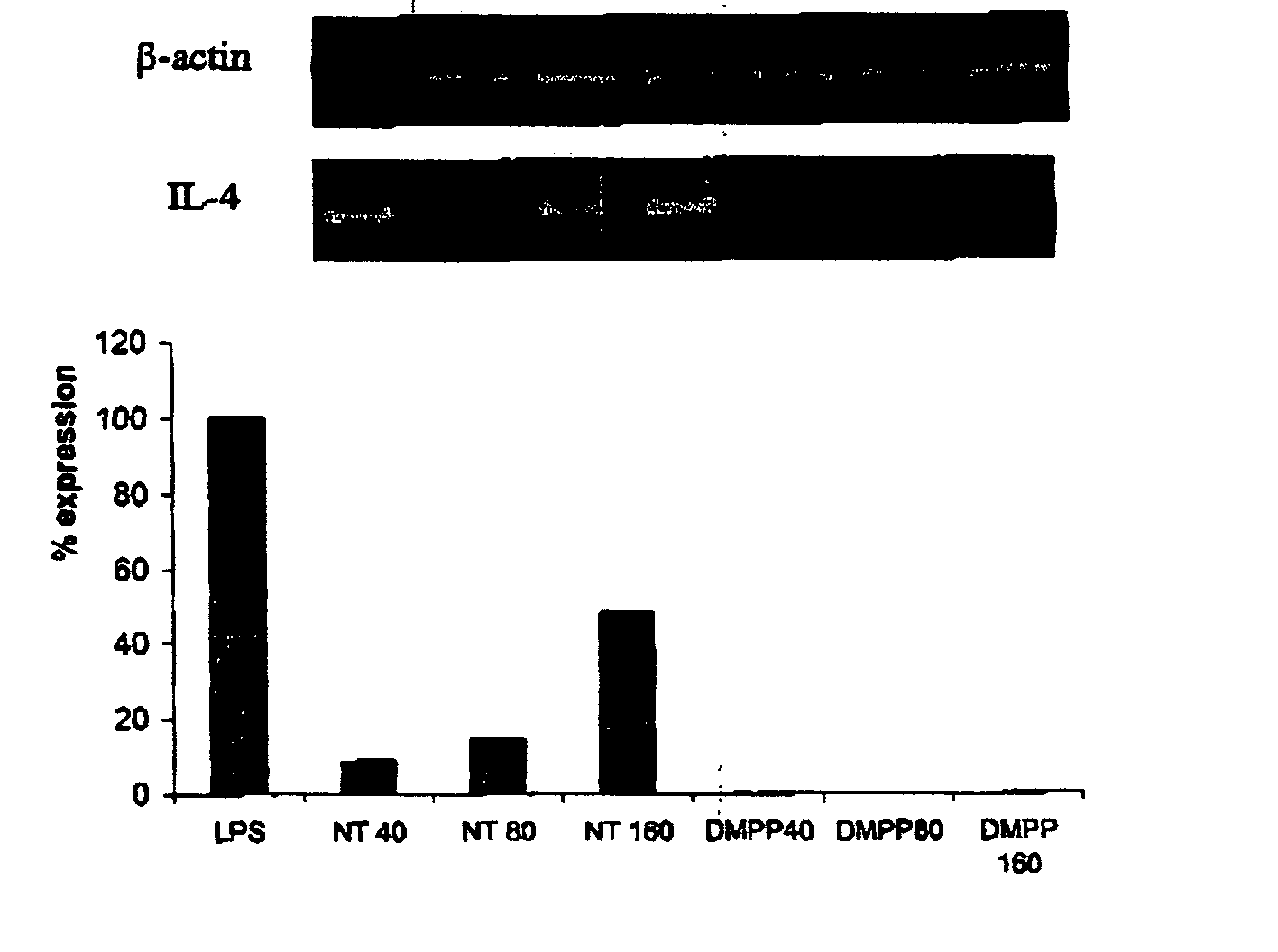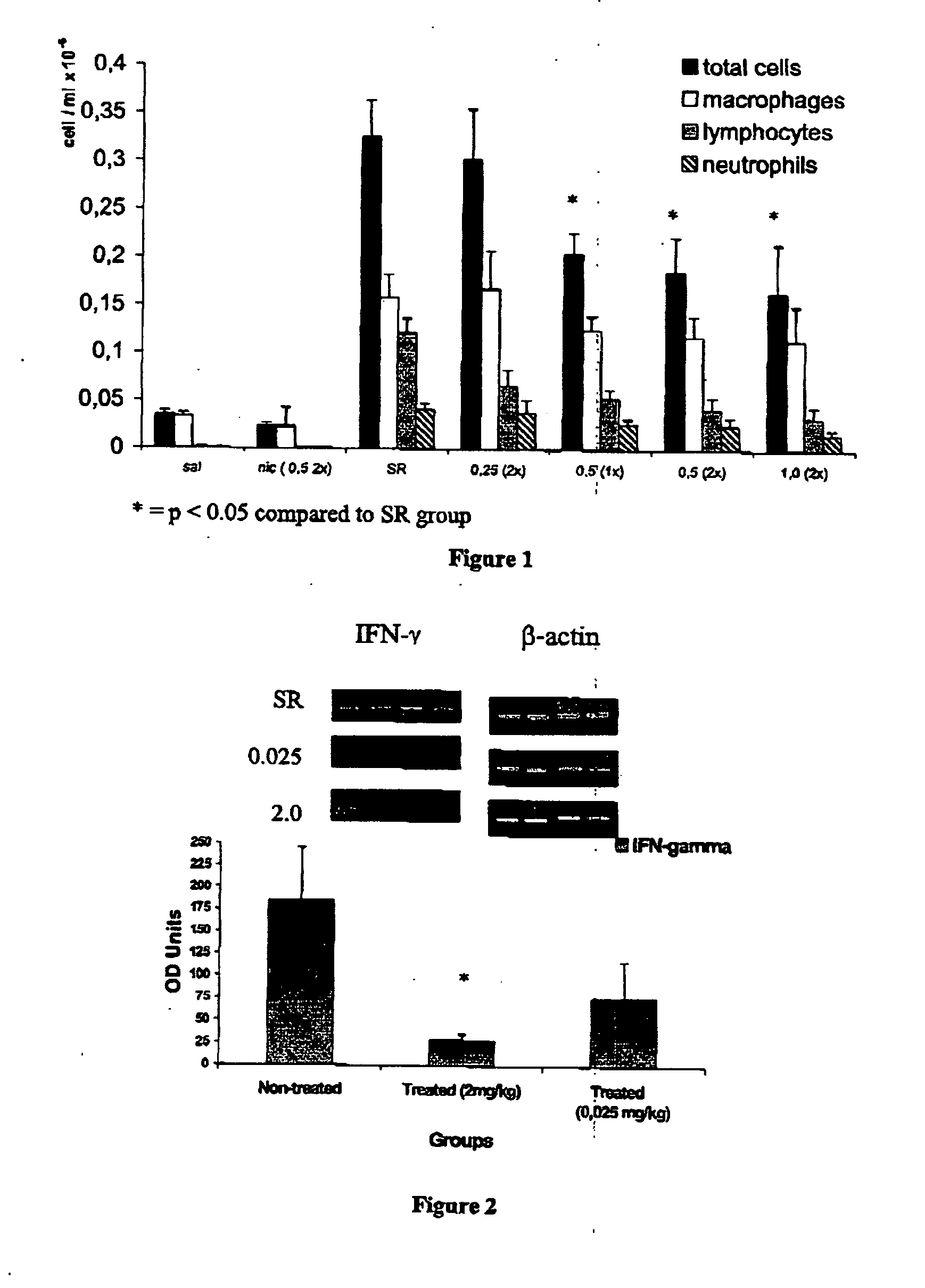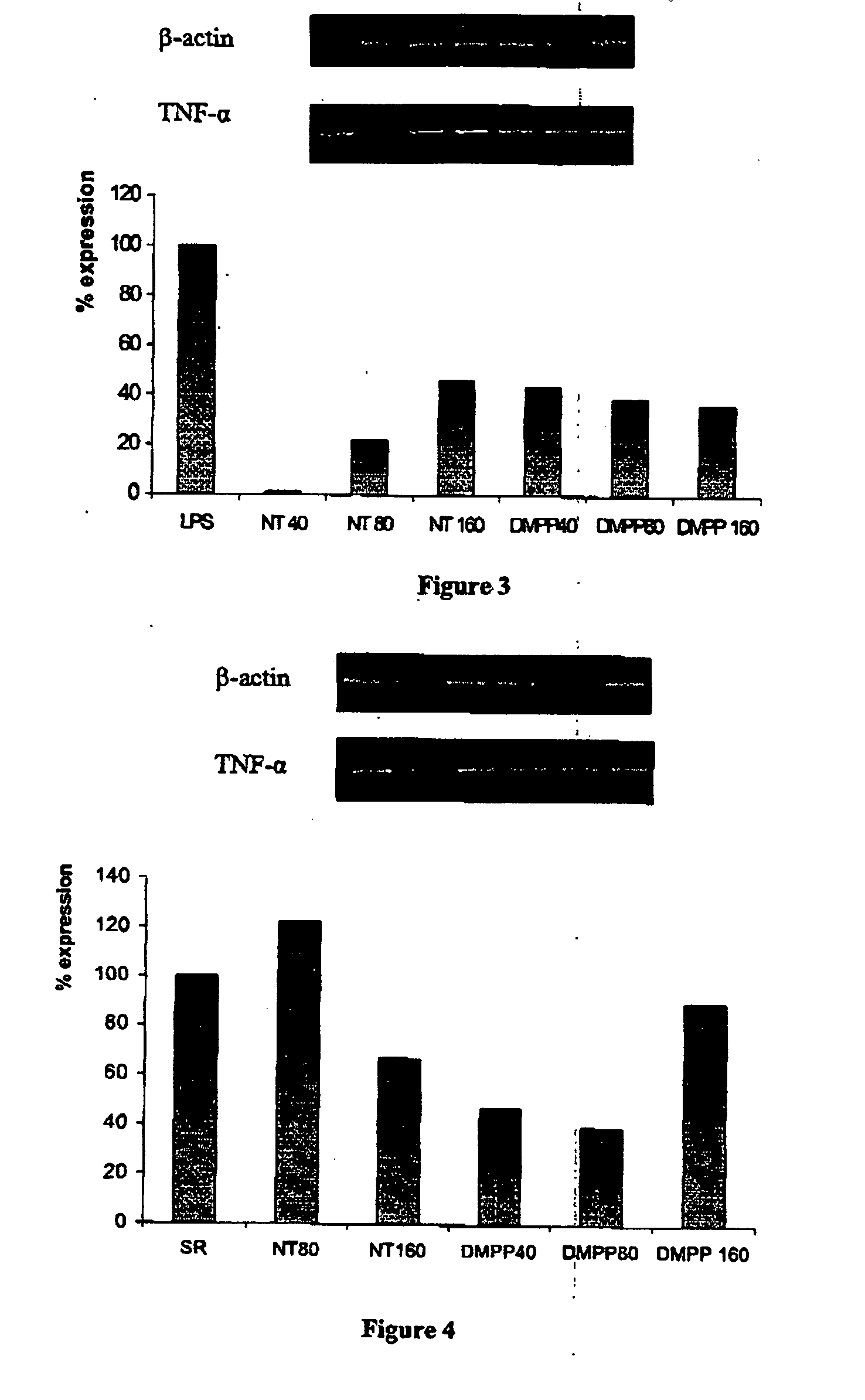Nicotinic receptor agonists for the treatment of inflammatory diseases
a technology of nicotinic receptor and inflammatory diseases, which is applied in the field of inflammatory diseases, can solve the problems of inducing addiction, crossing the blood-brain barrier, and not previously disclosed, and achieves the effect of minimizing any systemic effects and minimal side effects
- Summary
- Abstract
- Description
- Claims
- Application Information
AI Technical Summary
Benefits of technology
Problems solved by technology
Method used
Image
Examples
example 1
In vivo HP Studies
[0086] The hypothesis is that the stimulation of nicotinic receptors with nicotine down-regulates the immune response to HP antigens via inflammatory cytokine suppression and inhibition of specific antigen-mediated cellular activation.
[0087] This model was selected because, as mentioned previously, the incidence of HP is lower in smokers than in non-smokers (50), and because this model is well described. HP was induced by the administration of Saccheropospora rectivigula (SR) antigen, the causative agent of farmer's lung (51), a form of HP. Mice were simultaneously treated with intra-peritoneal (IP) nicotine, with doses ranging from 0.5 to 2.0 mg / kg, twice a day. Nicotine administration significantly reduced the number of total cells found in the bronchoalveolar lavage (BAL) of these mice. The population that was the most affected by nicotine treatment were lymphocytes as seen in FIG. 1. It will be seen that there was a marked inhibition of total cell counts in n...
example 2
In vitro Studies Showing the Effect of Nicotinic Agonists on Cytokine Expression
[0088] To further clarify the mechanisms involved in suppressive effect of nicotine in the in vivo model, an alveolar macrophage cell line was used.
[0089] The effect of nicotine or DMPP treatment on AMJ2-C11 cells was tested on TNF-α, IL-10 mRNA expression by RT-PCR. These cytokines are involved in the development of pulmonary inflammatory diseases such as HP, asthma and sarcoidosis (52-55). Nicotine and DMPP treatments showed a great decrease in TNF mRNA expression (up to a 98% reduction of expression in LPS stimulated and treated with 40 μM nicotine), but not in a dose-dependent manner. Reference is made to FIG. 3 where esults are expressed as a % of expression, 100% being attributed to the LPS alone group. The intensity of the band was obtained by dividing the intensity of the TNF-α band by that of β-actin. Treatment of stimulated cells with different doses (40 to 160 μM for nicotine and DMPP) induc...
example 3
In vitro Effects of Nicotinic Agonists on Co-Stimulatory Molecule Expression
[0091] The effects of nicotine and DMPP on B7 (CD80) molecule expression were tested in vitro. AMJ2-C11 cells (mouse alveolar macrophages, from the ATCC) were incubated with 40 μM nicotine or DMPP and stimulated with LPS (0.1 μg / ml) or SR antigen (50 μg / ml) for 48 hours. The percentage of expression of CD80 in treated cells was about one half of the expression found in LPS and SR stimulated non-treated cells. Reference is made to FIG. 8 (a) which shows that nicotine treatment (40 μM for 48 h) reduced the expression to 20% in LPS stimulated cells. Reference is also made to FIG. 8 (b) which shows that DMPP treatment (40 μM for 48 h) reduced the expression to 17% in LPS stimulated cells and 20% in SR stimulated cells.
PUM
 Login to View More
Login to View More Abstract
Description
Claims
Application Information
 Login to View More
Login to View More - R&D
- Intellectual Property
- Life Sciences
- Materials
- Tech Scout
- Unparalleled Data Quality
- Higher Quality Content
- 60% Fewer Hallucinations
Browse by: Latest US Patents, China's latest patents, Technical Efficacy Thesaurus, Application Domain, Technology Topic, Popular Technical Reports.
© 2025 PatSnap. All rights reserved.Legal|Privacy policy|Modern Slavery Act Transparency Statement|Sitemap|About US| Contact US: help@patsnap.com



